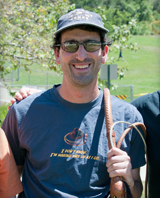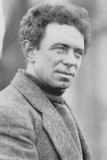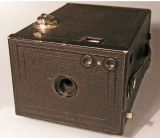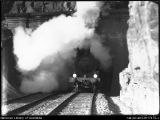
-CIA- World Factbook
-Cool Antarctica
-Discovering Antarctica
-FrankHurley.org

Laird's Bio

Follow Laird at
RunLairdRun.com

Support One of
Laird's Charities
Chapter 14 | Chapter 15 | Chapter 16

As I stated in chapter 1 of this Adventure Log, my desire to visit Antarctica predated my interest in running by many years. I have no doubt that one reason I could envision journeying south emanated from the photography of Frank Hurley.
Frank Hurley entered the world on October 15, 1885 in a suburb of Sydney, Australia. At 13, he ran away from home to work in a steel mill. (I guess going to Antarctica later in life did not take much coercing.) At 15, he returned home to attend a local technical school, and a further two years after that, he bought his first camera.
Hurley translated his technical skill and love of his new Kodak Box Brownie into work for a local postcard company. Disposable in our minds today, postcards at the turn of the century attracted a lot of money. Scenes of distant lands were sold far away from home. Owning a camera was an extreme luxury, so if you wanted to capture the scene, you needed to buy a picture card. (Hurley bought his first camera on credit and paid off a shilling a week.) Of course, like today, sometimes the only way to get a pristine picture (say of the Eiffel Tower without people in front of it) is to buy a postcard (or find an image online). In 1902, any image at all was pretty much limited to postcards or paintings. People would attend slide shows like movies. In fact, Hurley exhibited much of his work in touring events to packed houses. (My grandparents clearly knew about this, because I remember a lot of long nights seeing carousel after carousel of slides after their trips.)
Hurley quickly gained a reputation as an adventure photographer. His free spirit translated into a love of putting himself into dangerous spots to get the shot. Like in front of a steam train. We may find this hard to imagine because we live 110 years into Frank Hurley's future, but this type of photograph did not exist prior to his daring. Trains themselves were less than 100 years old. Clearly, Hurley did not lack courage.
Hurley also in many ways was a product of his generation. As I recounted in an earlier Log, the notion of doing the heroic act infused the early journeys to the unknown. Fellow photographer and contemporary of Hurley, Jack Cato wrote about that influence in an obituary following Hurley's death in 1962.
"Frank Hurley and I were both born to the age of the heroic tradition. In those far-off days all our boyish books were about adventure – The Deeds that Won the Empire, Courage and Conflict, etc. We were both fired with the Spirit of Adventure; we were both happy in the knowledge that the camera was the key that would open that Magic Door."
Helen Ennis, in her book "Frank Huley's Antarctica" wrote that Hurley is frequently referred to as an adventurer as well as a photographer. Judging from his work in the Mawson expedition, with Shackleton in the infamous Endurance survival ordeal, in the fields of France during World War I and then back to Antarctica in the 20s and 30s, Hurley clearly put himself in the line of fire (literally in the case of WWI).
Those photographs from Endurance were the earliest images of Antarctica I saw. Reading about Shackleton's audacity in leading his men from the doomed ship to Elephant Island and then by open boat to South Georgia fired my imagination. Seeing the accompanying images put me on the ice with the crew. In hindsight, Frank Hulery's pictures became my first Antarctica "Discovery Channel" special.
Back to the Top
Chapter 14 | Chapter 15 | Chapter 16





